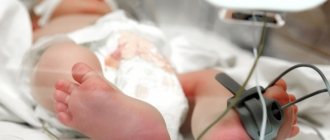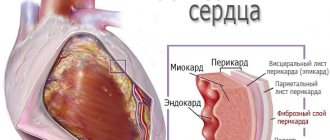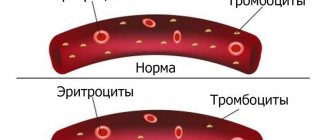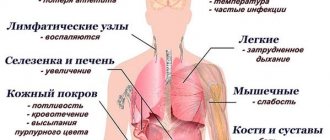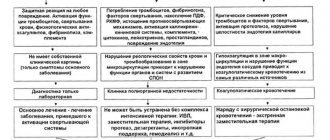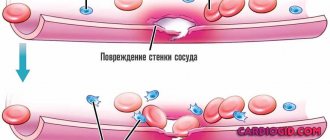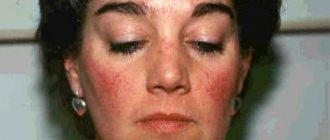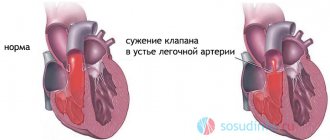To determine the child's health, a blood test . The results of this analysis show the level of hemoglobin, other cellular components and their ratio.
Attention! Basically, the doctor evaluates the number of red blood cells and white blood cells platelets are no less important blood cells .
When the platelet count is below normal, parents rightly begin to worry and have a lot of questions.
Therefore, everyone needs to know how dangerous low platelet levels are, why they decrease, and what to do about it.
Role in the body
Platelets in the body take part in the process of blood clotting .
When a blood vessel is damaged, platelets (also called platelets) form a clot that closes the damage and stops the bleeding.
In addition, platelets perform the following functions:
- support the functionality of blood vessels;
- transport substances that are necessary for blood renewal;
- play an important role in maintaining immunity.
There is such a thing as the platelet distribution index. This value shows the heterogeneity/heterogeneity of cells based on their volume.
Thrombocytopenia of newborns
The concept of “thrombocytopenia” includes a number of pathologies that are accompanied by a decrease in the level of platelets in the blood below 150*109/l and/or the development of hemorrhagic syndrome.
After birth, the number of platelets is on the border of normal – 100-200*109/, which is most typical for premature babies.
Thrombocytopenia in newborns is determined in 1-5% of cases, and clinically significant variants occur in 0.1-0.5%.
Causes
Thrombocytopenia in newborns can be caused by several reasons. The primary form develops as a result of immune processes in the body, and the secondary form is associated with the underlying disease.
Common causes of thrombocytopenia in newborns include pathologies of the mother, placenta, fetal growth retardation, and hereditary diseases.
Preeclampsia, or preeclampsia
Preeclampsia is characterized by an increase in a woman’s blood pressure, impaired permeability of the vascular wall with the occurrence of edema, and loss of protein. As a result, the fetus also suffers. Intrauterine thrombocytopenia, which is transient in nature, often develops. On days 7-10, the cell level returns to normal. The mechanism of the disease is most likely associated with inhibition of the megakaryocyte lineage of hematopoiesis.
Infections, sepsis
With intrauterine infection, a newborn may be born already having sepsis, severe pneumonia, etc. In addition, in the neonatal period, children are also susceptible to viral infections, the generalization of which leads to massive consumption of platelets in the vascular bed due to disseminated coagulation.
Chromosomal aberrations
Shereshevsky-Turner syndrome, trisomy of 13, 18 and 21 chromosomes in the clinical picture have a sign of thrombocytopenia in newborns.
Kasabach-Merritt syndrome
Congenital pathology that includes angioma and blood clotting disorders. Angiomas, as a rule, are widespread and localized on the head, neck, chest, and proximal parts of the extremities. They are found not only on the skin, but also on internal organs. Such lesions are present from birth.
A violation of the blood coagulation system is manifested by bleeding into the angioma cavity, as a result of which it increases in size and compresses nearby tissues. Platelets enter this area en masse, which further aggravates the condition. As a result, the following symptoms occur:
- rash formation;
- bleeding from the gastrointestinal tract;
- true melena;
- vomiting dark or scarlet blood.
Wiskott-Aldrich syndrome
This disease is a chromosomal nosology. Boys are sick. B- and T-cell immunity suffers. The key symptoms are:
- violation of the proportions of immunoglobulins;
- decrease in the number of T-lymphocytes;
- thrombocytopenia, eczema, purulent lesions.
Read also Folk remedies to increase blood clotting
Impact of drugs
There are a large number of substances that suppress hematopoiesis. Not only thrombocytopoiesis suffers, but also other germs. Among such remedies it is worth highlighting:
- Allopurinol;
- Aminoglutethimide;
- Beta-lactam antibiotics;
- Vanciclovir;
- Ganciclovir;
- Heparins;
- Hydrochlorothiazide;
- Isoniazid;
- Interferon;
- Procainamide;
- Ticlopidine;
- Phenytoin;
- Furosemide;
- Fluconazole and others.
Hypo-(a)megakaryocytoses
Thrombocytopenia in newborns can be observed with congenital pathologies: in combination with absent radius syndrome (TAR syndrome), other anomalies of bone tissue formation, Fanconi pancytopenia. When bone marrow is replaced by tumor cells or other structures, all hematopoietic germs are suppressed.
CAMP
Congenital amegakaryocytic thrombocytopenia of newborns, or CAMP, is inherited in an autosomal recessive manner. Infants with this diagnosis develop hemorrhagic syndrome with severe bleeding already in the first days of life. The prognosis does not bode well - children most often die from cerebral hemorrhage.
Fanconi anemia
This is a hereditary disease, which is accompanied by inhibition of all parts of hematopoiesis, multiple anomalies, and bronze skin color.
Classification
According to the classification of the development of the disease by time, the following types of thrombocytopenia in newborns are distinguished:
- intrauterine;
- early manifestation – up to 72 hours from birth;
- late form – after 72 hours.
The causes of intrauterine thrombocytopenia are associated with the following factors:
- alloimmune reaction;
- intrauterine infection - rubella, cytomegalovirus, toxoplasma;
- autoimmune diseases - systemic lupus erythematosus;
- rarely – severe Rh conflict;
- Wiskott-Aldrich syndrome.
The early form of thrombocytopenia in infants occurs due to:
- pathologies of the placenta;
- maternal diabetes mellitus;
- intrauterine growth retardation;
- asphyxia;
- allo- and autoimmune variants;
- more rarely - infections, thrombosis, Kasabach-Merritt syndrome, metabolic disorders.
The late form of manifestations occurs due to:
- neonatal sepsis;
- necrotizing enterocolitis;
- less often - other pathologies described earlier.
Alloimmune or isoimmune
Alloimmune thrombocytopenia is a disease that is associated with incompatibility of the blood of mother and fetus in platelet antigens. This form occurs in 1 child in 5000 births. Unlike hemolytic disease of the newborn, congenital thrombocytopenia in a conflict with maternal antibodies develops both during the first and second pregnancy.
It is this form of the disease that is characterized by a more severe course, the development of bleeding from the gastrointestinal tract.
Transimmune
A transimmune form of thrombocytopenia is noted if the mother has an autoimmune pathology. In such children, the level of platelets drops sharply after birth, when antibodies penetrate into the child's blood. The severity of the maternal immune process directly correlates with the severity of neonatal thrombocytopenia and clinical manifestations.
Read also: Symptoms and treatment of pulmonary embolism
Treatment
Treatment of thrombocytopenia in newborns depends on the cause of the disease. A number of conditions cause transient thrombocytopenia, correction of which is required only when clinical manifestations develop.
Therapy of immune thrombocytopenia in infants:
- begins with the appointment of donor milk or formula for 2-3 weeks;
- in the absence of clinical symptoms, wait-and-see tactics are chosen;
- platelet transfusion is prescribed when platelets decrease to less than 20-30 per 109/l or in case of bleeding;
- maternal cells, previously washed from alloantibodies, are used as donor cells at the rate of 10 ml/kg of the child’s weight;
- an alternative is washed platelet donor;
- in the absence of antigen-negative platelets, intravenous immunoglobulins are prescribed;
- administration of prednisolone 1-2 mg/kg for 3-5 days is indicated.
In other cases, when a decrease in platelets is associated with the underlying disease and acts only as a symptom, it is important to direct treatment to the key nosology and achieve symptom-free therapy.
Source: https://gemato.ru/koagulopatiya/trombocitopeniya-novorozhdennyx.html
Normal in children
The platelet count is measured in thousands per mm or in femtoliters. The level of these blood cells varies depending on a person's gender and age.
Important! The platelet count is different at night and during the day.
Doctors have calculated the average platelet levels in children under 18 years of age.
In a newborn
In children under 1 month – 100-420 thousand units/ml. In children under one year old - 150-350 thousand units / ml.
Over 2 years old
At 2 years and up to 12 years, the norm of platelets in the blood is 160-300 thousand pieces/mL , over 14 years old - 180-320 thousand pieces/ml.
Why might a child have low platelets?
Each element of the blood performs its own function in the body, which is why it is so important that their levels remain at optimal levels. Small, anucleate platelets of blood called platelets take part in such an important process as blood clotting.
They are responsible for the formation of a blood clot at the site of vessel damage in order to stop bleeding, support the constriction of blood vessels and their nutrition, and participate in immune processes and dissolution of the clot.
That is, the rate of blood clotting and wound healing depends on their quantity and quality characteristics.
A condition characterized by low platelet levels is called thrombocytopenia. It can be observed in both adults and children. If, after taking a blood test, it is discovered that the child’s platelets are low, the cause should be determined and treatment should begin.
Norm
The normal platelet count in children differs depending on age. So, in newborns this figure should be equal to 100-420X10⁹/l, before one year – 150-350X10⁹/l, after one year – 180-320X10⁹/l.
Classification of thrombocytopenia by severity
There are four degrees of thrombocytopenia in children:
- 75-99X10⁹/l – soft;
- 50-74X10⁹/l – moderate;
- 20-49X10⁹/l – medium weight;
- less than 20X10⁹/l – heavy.
The lower the platelet level, the more severe the symptoms. In mild and moderate forms of manifestation, they may be absent or unexpressed, for example, periodic nosebleeds are observed. As a rule, low platelets at this stage are discovered by chance.
Low platelet levels in children often result in nosebleeds
With moderate thrombocytopenia, hemorrhagic rashes appear on the body. In severe cases, internal hemorrhages and bleeding from the gastrointestinal tract are possible.
Why is it developing?
There are three main causes of low platelets:
- Decreased formation of anucleate cells in red bone marrow.
- Increased platelet destruction is the most common cause of low platelets.
- An abnormal distribution that results in a decreased concentration of platelets in the bloodstream.
Thrombocytopenia can be an independent disease, but often low platelets in a child are a symptom of various pathologies. The reasons may be as follows:
- infectious bacterial diseases;
- idiopathic thrombocytopenic purpura, in which platelets are destroyed due to autoimmune reactions;
- uremic syndrome;
- anemia;
- blood diseases;
- allergies (most often as a result of long-term use of medications);
- viral infections (mumps, rubella, measles, hepatitis);
- parasitic diseases;
- autoimmune reactions (lupus erythematosus);
- tuberculosis;
- poisoning due to inhalation of heavy metal vapors;
- penetration of antibodies from mother to fetus through the placenta;
- malignant diseases of the blood or bone marrow.
How does it manifest?
With low platelets, the blood becomes liquid, clots poorly, and there is a danger of bleeding not only externally, but also internally. The child often develops bruises, and bruises are not needed to form them - touches are enough. The main symptoms in children are as follows:
- pinpoint rashes are observed in almost 100% of cases;
- about a third have nosebleeds;
- 20% of children have bleeding gums;
- pink or red urine due to blood in it;
- vomiting blood;
- black feces;
- With abrasions and cuts, the bleeding does not stop for a long time.
A characteristic symptom of thrombocytopenic purpura in children is the formation of hemorrhages on the body
Primary thrombocytopenia
Acute thrombocytopenic purpura is an autoimmune disease, the causes of which are unknown. Most often it is observed in children from 2 to 6 years old. It usually occurs after vaccination or a viral infection. The disease develops rapidly, and hemorrhagic manifestations are immediately observed:
We recommend reading the article: Causes of low platelets during pregnancy
- Both pinpoint and larger elements (petechiae and ecchymoses) appear on the skin;
- hemorrhages on the body can have different colors - from purple-violet to greenish;
- new elements appear suddenly;
- there is no specific localization, hemorrhages are located asymmetrically.
The acute phase of the disease is characterized by nosebleeds, as well as bleeding after tooth extraction; in the puberty period in girls - uterine bleeding. In severe cases, bleeding from the gastrointestinal tract is possible, as evidenced by blood in the stool.
In some cases, hematuria (the presence of blood in the urine) and hemorrhages in the mucous membranes are observed. Sometimes hemorrhages occur in internal organs, in the retina, and in the brain. Some children have an enlarged spleen.
How to treat?
Treatment begins after it is determined why thrombocytopenia has developed. If the causes of low platelets are other diseases, appropriate treatment is prescribed, and their levels return to normal.
In case of primary thrombocytopenia, the child is prescribed bed rest; in case of bleeding of the oral mucosa, it is necessary to give chilled food. In the acute form, spontaneous recovery is possible, but the transition of the disease to a chronic form is not excluded.
Depending on the severity of the condition, treatment can last from one to several months. The main methods are as follows:
- intravenous injections of immunoglobulins;
- hormonal therapy using corticosteroids;
- administration of anti-Rhesus serum;
- transfusion of donor platelet mass;
- surgery to remove the spleen.
Conclusion
Thrombocytopenia in children can have different causes, on which subsequent treatment depends. This condition cannot be ignored. You should definitely consult a doctor if your child does not stop bleeding for a long time (from 10 minutes), bruises quickly and effortlessly appear on the body, frequent and severe headaches occur, or blood appears in the urine or feces.
Source: https://icvtormet.ru/krov/pochemu-rebenka-mogut-byt-ponizheny-trombocity
What blood level is considered low?
If a child's platelet level is below 100, this pathology is called thrombocytopenia .
This is a dangerous disease that can lead to bleeding that threatens the child's life.
This disease can be diagnosed through a detailed analysis; it is performed on newborn children, as well as during an annual routine medical examination of children.
Important! For a long time, low platelet levels do not manifest themselves clinically, so parents are strongly advised not to skip medical examinations and ignore consultations with a pediatrician.
Treatment of thrombocytopenia in newborns
Autoimmune thrombocytopenia in mother
Goal: prevention of intraventricular hemorrhage during vaginal delivery.
Delivery by cesarean section is possible if the mother's platelets are less than 100/nl or the fetus's platelets are less than 50/nl.
Thrombotic concentrate from a normal donor (no related donation).
Consider prenatal corticosteroid use for the mother.
Neonatal alloimmune thrombocytopenia
If fetal platelets are less than 50/nl, or other children in the family had immune thrombocytopenia, then surgical delivery is indicated (75% risk of relapse)
Transfusion of maternal washed platelets in case of bleeding tendency and platelet level less than 20-30/nl. Weigh the need for replacement blood transfusion.
Corticosteroids or IV immunoglobulin are debated.
Other thrombocytopenias
Treatment of the underlying disease.
Indications for platelet transfusion:
- Platelets less than 20/nl without signs of bleeding.
- Platelets less than 30/nl with signs of bleeding.
Dosage of platelet concentrate transfusion:
- 10 ml/kg body weight of platelet concentrate increases platelet levels by approximately 50-100/nl. After transfusion, control platelet levels.
- Storage: platelet concentrate can be stored at room temperature with constant stirring for 5 days.
- Administration: strictly separately through peripheral venous access.
For alloimmune thrombocytopenia (maternal sensitization against fetal platelet antigens), transfuse maternal platelets (leukocyte-depleted and irradiated).
Possibly prednisolone (or dexamethasone). The use of immunoglobulin remains controversial.
Platelets carry A and B antigens, but do not carry Rh antigen.
What does this mean - low level reasons
Doctors are confident that low platelet levels are most often a temporary phenomenon and occur due to the child’s poor nutrition and the negative influence of environmental conditions.
But parents should understand that in some cases, low platelet levels are a sign of a serious pathology.
Low platelets can be caused by:
- Bone marrow dysfunction. This pathology can be caused by taking drugs to slow the growth of malignant tumors, leukemia, mumps and other ailments.
- Thrombocytopenic purpura is the activation of antibodies that consider platelets to be foreign agents and attack them.
- Entrainment of the spleen - the organ may exceed its normal size due to hepatitis or cirrhosis of the liver.
- Food allergies, as well as reactions to external irritants and medications.
- Infectious diseases.
- Autoimmune pathologies.
- Arrhythmia in advanced form.
- Tuberculosis.
- Disturbances in the functioning of endocrine organs.
- Presence of metastasis to the bone marrow.
- Toxic poisoning.
- Parasites.
- Cobalamin deficiency.
The video explains why platelet levels in the blood drop:
Causes of thrombocytopenia in newborns
- Medicines: heparin, gndralazine, tolbutamide.
- Infections.
- HELLP syndrome.
- Autoimmune thrombocytopenia: ITP, systemic lupus erythematosus, thrombocytopenia due to gestation.
- Isoimmune thrombocytopenia: neonatal alloimmune thrombocytopenia (NAIT), fetal erythroblastosis.
- Chorioangiomatosis.
- Placental abruption, thrombosis.
- Reduced production: syndromic (with absence of the radius), Fanconi anemia, rubella, leukemia, trisomy 13, 18, 21.
- Increased consumption: sepsis, TORCH, DIC, asphyxia, NEC (persistent in case of perforation), venous thrombosis.
What does thrombocytopenia mean?
Antibodies can pass from mother to fetus through the placenta, and this often causes thrombocytopenia in newborns.
Attention! With low platelets, the blood thins and clots poorly. As a result, there is a danger of not only external bleeding, but also internal bleeding.
Parents may notice bruises appearing on their child for no apparent reason. In some cases, a simple touch is enough for a hematoma to appear.
Causes of thrombocytopenia in newborns
- Medicines: heparin, gndralazine, tolbutamide.
- Infections.
- HELLP syndrome.
- Autoimmune thrombocytopenia: ITP, systemic lupus erythematosus, thrombocytopenia due to gestation.
- Isoimmune thrombocytopenia: neonatal alloimmune thrombocytopenia (NAIT), fetal erythroblastosis.
- Chorioangiomatosis.
- Placental abruption, thrombosis.
- Reduced production: syndromic (with absence of the radius), Fanconi anemia, rubella, leukemia, trisomy 13, 18, 21.
- Increased consumption: sepsis, TORCH, DIC, asphyxia, NEC (persistent in case of perforation), venous thrombosis.
Analysis
If parents notice the symptoms listed above in their child, they should take the child to a specialist as soon as possible.
- The doctor can make a preliminary diagnosis after a visual examination of the patient and after listening to the complaints of the parents.
- Further diagnostics will be carried out in stages. First, a blood test is necessary to count platelets; if immature forms of granulocytes are detected during the analysis, a bone marrow sample will be required.
- If a specialist comes to the conclusion that the cause of low platelets is autoimmune pathologies, it is necessary to donate blood for antibodies.
To identify the disease that accompanies thrombocytopenia, it is necessary to undergo the following studies:
- Ultrasound of the spleen;
- chest x-ray;
- linked immunosorbent assay.
Platelets are low in a child: what does this mean and what should be done?
From the moment of birth, the child must be constantly monitored by a pediatrician. If the mother notices that bruises or red stars are appearing on the baby’s body for no reason, then she needs to take a test to determine the quantitative and qualitative composition of the blood. To understand why your baby has few platelets and how to avoid this, you need to know what functions they perform.
Functions and role of platelets
Platelets are small plates that are part of the blood. They prevent the formation of blood clots and protect blood vessels. If the walls of a capillary or vessel are damaged, platelets accumulate around the diseased area and form a clot.
The life cycle of platelets begins from the moment they are separated from the red bone marrow and lasts about 8-10 days. At this time, the blood platelets retain their spherical shape and move freely through the vessels. The destruction of dead cells occurs in the liver and spleen.
Blood clotting depends on the number of platelets in its composition. To eliminate damage to the endothelium, they are deformed, acquiring a star shape. Layering one on top of the other, platelets form a blood clot. The rapid formation of a blood clot is facilitated by coagulation proteins released into the blood.
Platelets perform four main functions in the human body:
- The angiotrophic function ensures tissue integrity. When blood platelets are destroyed or interact, biological substances are produced that serve as food for the walls of blood vessels.
- The hemostatic function is to constrict blood vessels when damage occurs. Platelets accumulate in the resulting holes, thereby forming platelet plugs. This makes it possible to narrow the channel passage to avoid the leakage of biological fluid.
- The phagocytic function allows platelets to fight the development of pathogenic microorganisms. They attach to the walls of bacteria and inhibit their vital activity. Thus, the negative impact of external factors on the body is minimized, and the functioning of the immune system is stabilized.
- The regenerative function promotes the restoration of vascular walls due to growth factors. When the level of platelets decreases, the risk of blood loss increases due to the appearance of internal bleeding, since the strengthening of blood vessels will be insufficient.
Normal platelet count in a child's blood
To carry out the study, blood is taken from the baby’s finger or vein. In newborn babies, blood can be taken from the heel.
During the analysis, the number of blood cells in 1 μl of blood is counted. In infants in the first five days after birth, the platelet count should be 180-490 thousand/µl. For babies under 12 months, the norm is considered to be in the range of 180-400 thousand/µl, and for children over 1 year old – 160-390 thousand/µl.
The MPV index in the analysis indicates the average platelet volume. In children under one year old, this figure is 7-7.9 fl. In children aged 1-5 years, the index is in the range of 8-8.9 fl. The normal MPV for older children is 7.5-11 fl. If the study results show that the mean platelet volume (MPV) is higher or lower than normal, the doctor will order additional tests for your baby.
Laboratory blood tests are prescribed for children during routine examinations, even when they have no external signs of illness. An unscheduled analysis is necessary if the child’s gums bleed, the bleeding does not stop for a long time when cuts occur, bruises appear, frequent pain in the legs and arms and other painful symptoms.
The level of platelets in a child’s blood is influenced by the following factors:
- Baby's age. The rate is higher in newborn babies than in older children.
- Products included in the baby's diet. Food can promote both the development of blood cells and the reduction of their number.
- Previous diseases, as well as medications used for treatment.
- Increased physical activity leads to a short-term increase in this indicator.
- At different times of the day, the content of blood platelets in biological fluid can vary within 10%.
In order for the test result to be most accurate, the following rules must be followed before taking blood:
- the procedure must be performed on an empty stomach, so eating before taking the test should be avoided;
- a necessary condition is the absence of emotional or physical stress;
- The baby's clothing should be appropriate for the weather;
- If you are taking medications, you must inform your doctor.
Causes of low platelet levels in children
If the test shows low platelets in a child, this indicates that blood clotting has worsened. This is very dangerous in childhood, as children are prone to bruises and injuries. Low platelet levels cause blood vessels to become less elastic. A slight violation of the integrity of the vessel can lead to severe internal bleeding.
A disease in which there is a lack of platelets in a child's blood is called thrombocytopenia. A decrease in the indicator may occur for the following reasons:
- low hemoglobin (anemia);
- allergic reaction to a drug, product or external factor;
- accumulation of toxins in the body;
- side effects of medications (diuretics, antibiotics, etc.);
- vitamin B12 deficiency;
- bacterial or viral infections;
- disruption of hormone production;
- hemodialysis performed for renal failure.
Reduced platelet levels are observed in infants born prematurely or after a difficult birth. To fully restore the child’s health, comprehensive treatment is necessary.
The reason for taking a blood test is if the baby has signs of thrombocytopenia:
- hematomas form on the skin even with minor exposure;
- blood is often discharged from the nose or rectum;
- small dots or meshes form on the skin;
- if a capillary or vessel is damaged, the blood does not stop for a long time;
- Gums bleed constantly.
Congenital hemophilia can also lead to low platelets. It is accompanied by the appearance of a large number of unexplained bruises on the newborn’s body. Parents of such a baby need to ensure that he does not get injured by a bruise, as this can lead to serious consequences.
If a decrease in the baby’s platelet level is a concomitant symptom of the underlying disease, the indicator returns to normal after recovery. Additional measures are not required to restore blood platelets.
Diagnosis and treatment
If your child develops symptoms associated with increased bleeding, you should consult a doctor. The initial diagnosis is made after a visual examination of the patient and examination of the baby’s complaints. When visiting a doctor, parents should describe in detail the symptoms that accompany the disease.
If thrombocytopenia is suspected, further diagnosis includes several stages. The first of these is to conduct a laboratory blood test to determine the number and average volume of platelets in the biological fluid.
If microscopy of a peripheral blood smear showed the presence of immature granulocytes (granular leukocytes) or erythronormoblasts (nucleated red blood cells), then hemoblastosis may be the cause of the decrease in platelets. In this case, an accurate diagnosis will require a trephine biopsy (obtaining a sample of red bone marrow).
If the doctor decides that the child’s platelets are low due to an autoimmune pathology, he will need to take a blood test for antibodies. To determine a disease accompanied by thrombocytopenia, the following diagnostic methods are used:
- ultrasound examination of the spleen;
- chest x-ray;
- enzyme immunoassay of biological fluid.
If it turns out that the cause of the decrease in platelet levels is a disease, the patient is prescribed appropriate treatment. Therapeutic measures are not carried out to increase the indicator. If the disease is accompanied by bleeding, the patient is hospitalized and given emergency care.
As a medical treatment for hemorrhagic syndrome, injections of aminocaproic acid are prescribed, which is an inhibitor of fibrinolysis and has hemostatic properties (we recommend reading: instructions for using aminocaproic acid for children in the nose). To restore the tone of the vascular walls and improve blood circulation, drugs from the pharmacological group of angioprotectors are prescribed. Such drugs include Pentoxifylline, Etamzilate, etc.
When diagnosed with idiopathic thrombocytopenic purpura, therapeutic measures consist of taking steroid hormones - glucocorticoids and immunoglobulin. Chemotherapy and membrane plasmapheresis help eliminate the causes of the disease.
Special diet
If the cause of low platelets is hemophilia, the child must follow a special diet that will help normalize the low level. When choosing foods for your baby, it is better to give preference to those that contain large amounts of iron, vitamin B12 and folic acid. The child's diet should include:
- dishes made from beef or pork liver (contain many minerals);
- natural juices and purees from fruits and vegetables (rich in vitamins);
- dishes from fatty fish;
- porridge from various cereals (buckwheat, pearl barley, oatmeal);
- fresh vegetables (cucumbers, carrots);
- greens (dill, parsley, lettuce);
- fruits (green apples, pomegranate).
If the analysis shows that the child has few platelets, it is necessary to completely exclude the following foods from his diet:
- fatty, spicy, salty dishes;
- foods and drinks containing food colorings;
- smoked meats;
- semi-finished products from stores;
- dishes prepared with the addition of vinegar.
Source: https://www.deti34.ru/diagnostika/krov/nizkie-trombocity-u-rebenka.html
Specifics of treatment
There are no medications to increase platelets; it is necessary to treat the pathology that caused their decrease.
If a child begins to bleed, he must be immediately hospitalized for emergency care.
In some cases, doctors consider it advisable to prescribe the following drugs:
- Corticosteroids - they affect the functioning of the adrenal glands and the production of platelets is stabilized. Among the most popular drugs are Prednisolone and Dexamethasone.
- Immunoglobulins - these injections are prescribed in the presence of an inflammatory process in the body. Drugs in this group strengthen local immunity, increase platelet production and promote their life expectancy.
- Serum that prevents the destruction of platelets . It is prescribed when other methods have no effect.
What to do
If low platelets are detected in a child, with a slight deviation from the norm, it is necessary to make changes to the diet, supplementing the diet with iron-containing foods, vitamins C and A. Increase the diet with foods such as buckwheat, meat, fish, herbs, and vegetables. You should avoid fruit juices, and you should also remove seaweed and cranberries from your diet.
It is necessary to control the daily routine, the child must sleep a sufficient amount of time and maintain moderate physical activity, be in the fresh air more often, and relax with his parents in nature.
If a child has low platelets, it is allowed to use traditional medicine in the form of herbal infusions, but only after mandatory consultation with a pediatrician. In the moderate and severe stages of falling particles, in addition to proper nutrition, drug treatment is necessary, which will consist of eliminating the main cause of the pathology that has arisen. Medicines and other methods of therapy should be selected by a pediatrician.
Important information: Why are lymphocytes in the blood low during pregnancy?
The following drugs are used:
- A group of corticosteroids - are involved in the process of regulating the formation of cells in the bone marrow in sufficient quantities. It is important to use this group of medications correctly to avoid side effects. In case of severe pathology of the liver and kidneys, use is contraindicated.
- Immunoglobulins - used in injections if the reason for the reduced level of particles is an inflammatory process. With this therapy, not only does the number of blood cells increase, but their life period also extends, and local and general immunity is strengthened.
- Preparations in the form of serums that slow down the process of platelet destruction. If the amount drops to a critical level, and drug therapy is not effective, a transfusion is performed using donor blood.
- In case of pathology in newborns up to three months of age, special milk and dairy-free formulas are selected, and, if necessary, drug treatment or blood transfusions are also prescribed.
Prevention
To reduce the risk of platelet lows, it is necessary to adhere to a balanced and proper diet for the child , and be sure to ensure that vitamin deficiency does not develop.
Parents should also understand the importance and necessity of annual medical examinations of the child, undergo them in a timely manner and pass all prescribed tests.
Attention! Provided that the child has already been diagnosed with thrombocytopenia, or has a predisposition to this disease, the test should be taken 2 times a year, and sometimes more often.
Regardless of how low the platelets in the child’s blood are, this should alert parents. Especially those who have or have had thrombocytopenia in their family.
Self-medication is strictly prohibited, since there can be many reasons for the development of pathology, and for therapy to be as effective as possible, they must be eliminated first.
In addition, it is necessary to understand that symptomatic treatment will improve the situation only for a while, and this does not exclude a sudden and sharp deterioration in the child’s health.
Treatment of thrombocytopenia in newborns
Autoimmune thrombocytopenia in mother
Goal: prevention of intraventricular hemorrhage during vaginal delivery.
Delivery by cesarean section is possible if the mother's platelets are less than 100/nl or the fetus's platelets are less than 50/nl.
Thrombotic concentrate from a normal donor (no related donation).
Consider prenatal corticosteroid use for the mother.
Neonatal alloimmune thrombocytopenia
If fetal platelets are less than 50/nl, or other children in the family had immune thrombocytopenia, then surgical delivery is indicated (75% risk of relapse)
Transfusion of maternal washed platelets in case of bleeding tendency and platelet level less than 20-30/nl. Weigh the need for replacement blood transfusion.
Corticosteroids or IV immunoglobulin are debated.
Other thrombocytopenias
Treatment of the underlying disease.
Indications for platelet transfusion:
- Platelets less than 20/nl without signs of bleeding.
- Platelets less than 30/nl with signs of bleeding.
Dosage of platelet concentrate transfusion:
- 10 ml/kg body weight of platelet concentrate increases platelet levels by approximately 50-100/nl. After transfusion, control platelet levels.
- Storage: platelet concentrate can be stored at room temperature with constant stirring for 5 days.
- Administration: strictly separately through peripheral venous access.
For alloimmune thrombocytopenia (maternal sensitization against fetal platelet antigens), transfuse maternal platelets (leukocyte-depleted and irradiated).
Possibly prednisolone (or dexamethasone). The use of immunoglobulin remains controversial.
Platelets carry A and B antigens, but do not carry Rh antigen.
